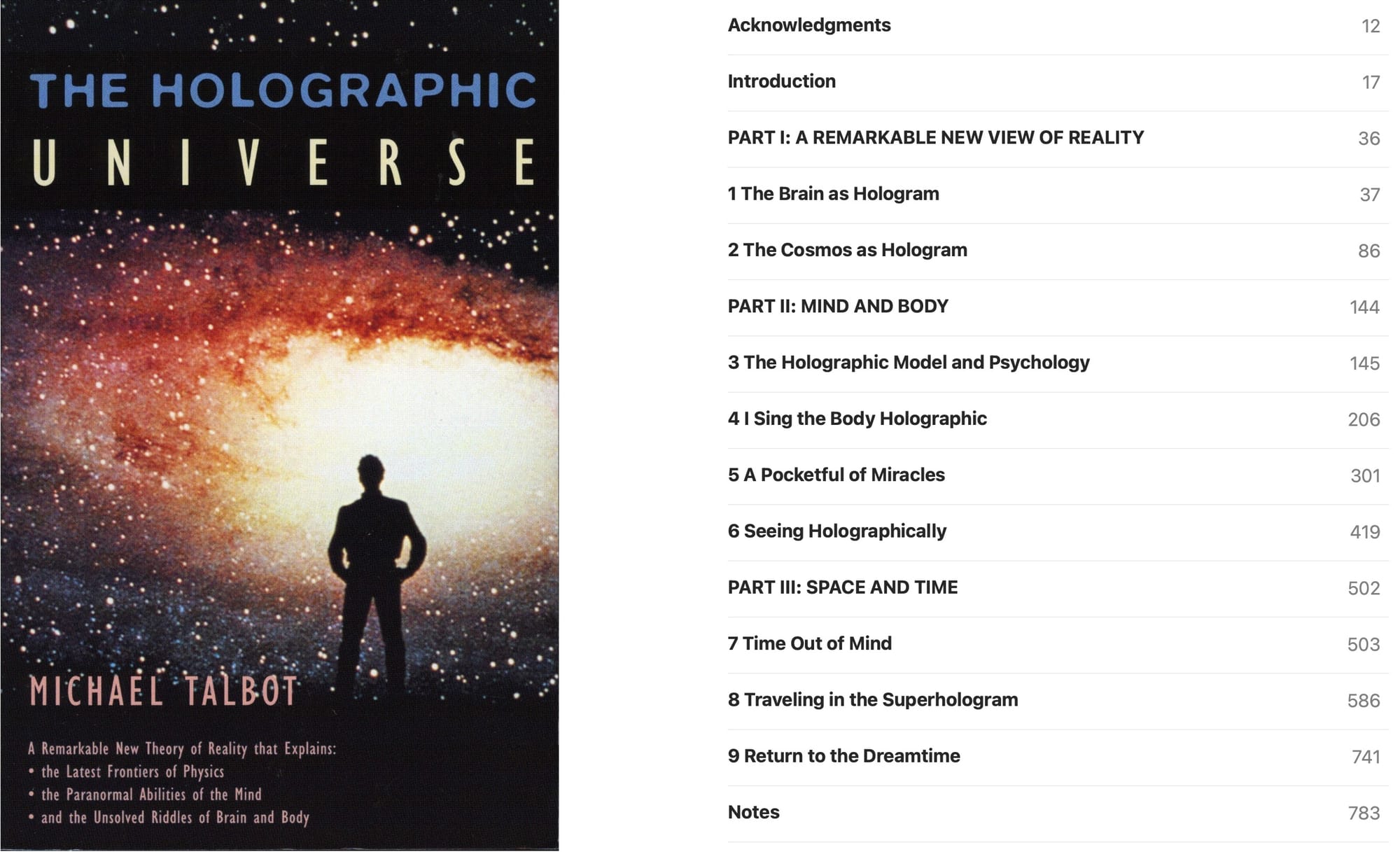The Holographic Universe

Here is a chapter-by-chapter summary of The Holographic Universe by Michael Talbot, highlighting the main topics and findings of each chapter:
Chapter 1: The Brain as Hologram
- Karl Pribram’s theory that the brain functions like a hologram, distributing memories across its structure.
Chapter 2: The Cosmos as Hologram
- David Bohm’s idea that the universe is a hologram, with every part containing the whole, supported by quantum physics.
- It seems likely the universe is interconnected, with quantum nonlocality suggesting instant correlations across distances, challenging materialist views and suggesting consciousness and matter are linked.
Chapter 3: The Holographic model and Psychology
- Applying the holographic model to dreams, memory, and mental disorders.
- The evidence leans toward explaining associative memory and dreams as holographic processes, with disorders like schizophrenia possibly resulting from disrupted holographic organization, suggesting a fluid, interconnected consciousness.
Chapter 4: I Sing the Body Holographic
- The body’s holographic nature, focusing on health and psychosomatic effects.
- Research suggests every cell contains the whole body’s information, with placebo effects and spontaneous healing showing mind-body unity, supported by techniques like biofeedback.
Chapter 5: A Pocketful of Miracles
- Exploring telepathy, psychokinesis, and near-death experiences through the holographic lens.
- It seems likely paranormal events align with a deeply interconnected reality, with telepathy and psychokinesis suggesting consciousness can access information beyond physical limits, though findings are controversial.
Chapter 6: Seeing Holographically
- How perception filters the holographic universe and relates to mystical experiences.
- The evidence leans toward mystical states revealing holographic unity, with synchronicities reflecting deeper connections, suggesting ordinary and mystical perceptions are two sides of the same reality.
Chapter 7: Time Out of the Mind
- The nature of time, including precognition and non-linear temporality.
- Research suggests time may be holographic, with past, present, and future coexisting, supported by precognitive dreams, though this is speculative and debated.
Chapter 8: Travelling in a Superhologram
- Out-of-body experiences, spiritual traditions, and paranormal phenomena.
- It seems likely OBEs and spiritual practices align with a holographic model, bridging science and spirituality, though interpretations vary widely.
Chapter 9: Return to the Dreamtime
- Implications for science, society, and human potential.
- The evidence leans toward the holographic model fostering unity and new technologies, potentially transforming society, though its speculative nature invites debate.
- Memories aren't stored in specific neurons but are spread out, like a hologram, with experiments showing memory persists even after brain damage. This implies the brain processes sensory data holographically, potentially linking to broader reality.